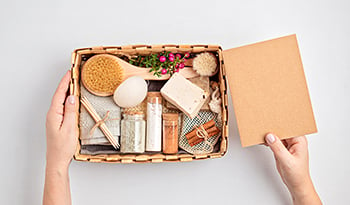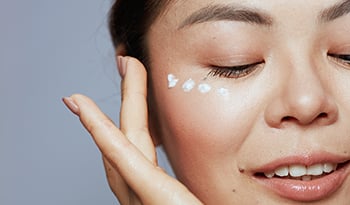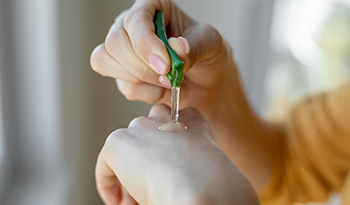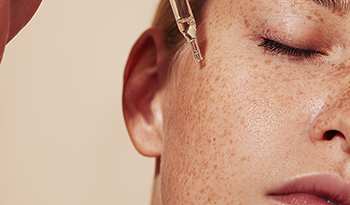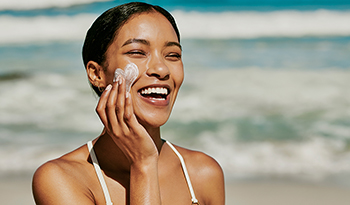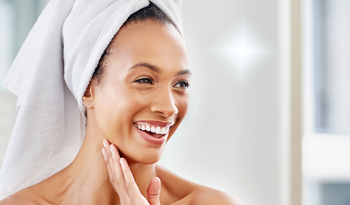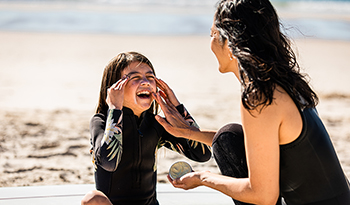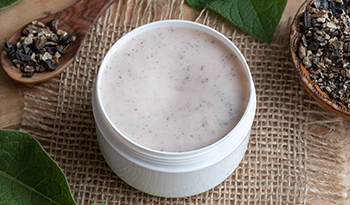How to Keep Your Scalp Happy
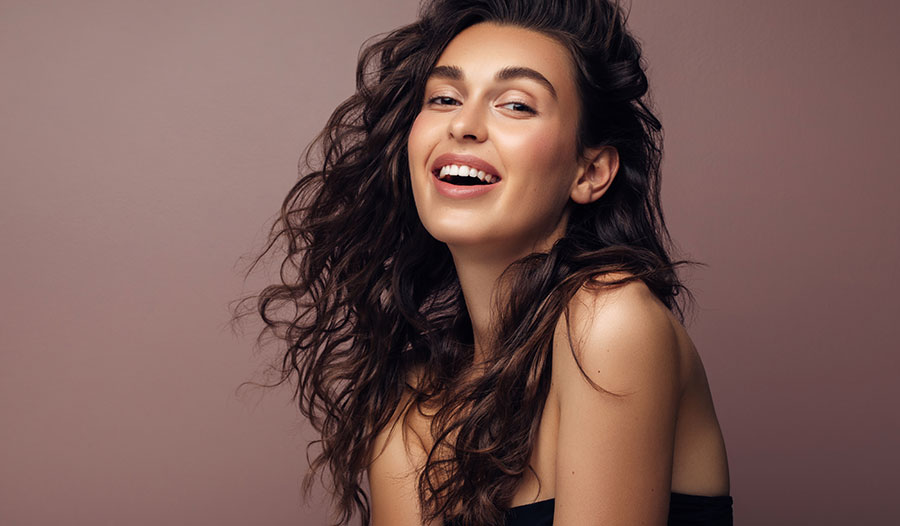
When most people think about skincare, I wonder how many actually consider the skin on their head? Because the scalp is covered in hair, it often gets forgotten. However, the scalp is unique from the skin on the rest of our body and deserves special attention. Fun fact: Did you know that the main reason why we are taught to “wash our hair” is actually to wash the scalp, and not so much about the hair?
As a dermatologist, I frequently see patients with skin concerns on the scalp, such as dry flaking skin caused by seborrheic dermatitis (dandruff) or psoriasis, scalp itch (pruritus), or excessive oiliness. Whether you are having issues with your scalp, or you’re just hoping to keep it healthy, here’s what you need to know about scalp hygiene.
Taking Care of Your Scalp
There are three main considerations to address when we talk about scalp skincare. One is the frequency of washing (how often you should cleanse the scalp), the second is how you wash, and the last is what you wash with.
How Often to Wash the Scalp
There are lots of rumors and opinions about what the optimal frequency of hair/scalp washing is. What I tell people is that whenever you hear a lot of different answers about something, it probably means that there is not just one correct way to do something, and this is true regarding the frequency of scalp cleansing.
At a minimum, you should wash your hair at least 1-2 times a week. Beyond that, how often you should wash is different for everyone, and may vary based on the climate, season, and your activities. For many people, washing 1-2 times a week is not enough. When we wash our scalp, we are not only removing sweat, dirt, and oils, but we are also manually stimulating the scalp to dislodge the buildup of dead skin and promote circulation of the scalp. Therefore, if washing is too infrequent, you can get a buildup of greasy, flaky scale, oil in the hair, and increase the tendency for yeast overgrowth (more on that later).
I recommend tailoring how often you wash your hair by monitoring how your scalp does with different frequencies of washing. If you look at the scalp and you’re noticing lots of scale or oil building up, you may need to wash more often. If your hair and/or scalp seem dry, you may need to ease up on the washing, because too much washing can dry out the skin and hair. If you’re having trouble finding your optimal frequency of washing, see a board-certified dermatologist and they can look at the scalp and help you adjust your routine if needed.
How to Wash Your Hair and Scalp
As I mentioned above, when we wash our hair and scalp, we are accomplishing two things. One is removing sweat, dirt, and oils, and the other is manually stimulating the skin of the scalp.
When I refer to manual stimulation of the scalp, I’m talking about massaging and gently rubbing the skin of the scalp. This is one of the most important parts of washing your “hair,” and it’s often the most overlooked. As you may know, the life cycle of the skin is that the body makes new skin cells every day. Those skin cells mature, die, and eventually shed off, similar to how a snake sheds its skin—except they do it all at once, and we do a little bit all the time. Once the skin cells die and shed, if they don’t get removed, they build up on the skin, leading to scaliness and a perfect environment for yeast to grow. For this reason, it’s important to massage the scalp to help dislodge the dead skin cells from the scalp.
When you are shampooing, you should make sure that when you lather up, you’re applying the shampoo directly to the scalp (to further help remove the oils and skin cells) and work it across the entire scalp. The mistake I commonly see is that people are lathering up their shampoo and just washing their hair, when really the point is to direct it to the scalp. If you’re having trouble massaging the scalp, or if you just want to improve your technique, you can try a scalp massager. If you’re getting a scalp massager, I recommend the ones with rounded prongs that provide gentle pressure. You can also use a hairbrush and massage the scalp! I would avoid rough, abrasive “scrubbing” brushes and scrub products because these can be too irritating. If you do too much rubbing or scraping, the skin actually reacts by producing more scale, itch, and thickening. This is particularly an issue for people who have psoriasis. People with psoriasis have to be careful to not scrub too hard because it can cause worsening of their condition.
Here are some of my favorite scalp massagers and brushes:
Conair Velvet Touch Detangle & Style Hair Brush
Conair Copper Collection Detangling Comb
There are a few more tips I recommend for hair/scalp washing. The first is to wash your hair first, before the rest of the body. When you wash your hair, all the dirt, oils, and residue from the shampoo and conditioners flow down over the body and face. So you want to wash your body and face after you wash your hair, so that stuff doesn’t end up sitting on the rest of your skin. The other important tip to know is that you should target your shampooing to the scalp and roots of the hair. When conditioning, you should focus on the ends of the hair. If you are putting conditioner too close to the scalp, it may make the hair feel oily or heavy.
What Products Should You Use for Your Scalp?
Just as everyone has varying skin types, everyone also has different needs for their scalp care. People with scalp conditions like psoriasis or seborrheic dermatitis will benefit more from certain ingredients than people who do not have those conditions. Similarly, people with sensitive skin will have different needs than someone without sensitive skin, and lastly, people with dry, fine hair will have different product needs than someone with thick, curly hair.
Dandruff
Dandruff (seborrheic dermatitis) is a condition in which there is greasy, flaky, yellow scale on the scalp. It can also commonly present along the eyebrows, in the ears, and around the nose. In people with seborrheic dermatitis, what’s mostly happening is that the body is reacting to an overgrowth of yeast (Malassezia furfur). Therefore, ingredients that fight yeast, such as selenium sulfide and zinc pyrithione, are helpful.
Tea tree oil can also help fight yeast and other microorganisms, however in some people it can cause tingling, irritation, and dryness, so watch out. Olive oil is one of the yeast’s favorite foods, so I would also avoid products that contain olive oil in their ingredient list. Apple cider vinegar has been touted to help seborrheic dermatitis due to its antimicrobial and anti-inflammatory properties, as well as pH effect on the scalp, however, this is not backed by scientific evidence. If the scaliness is still out of control despite trying some of these ingredients, a dermatologist may recommend prescription antifungals or topical steroids.
Here are some products to try if you have dandruff:
Dove Dermacare Scalp Anti-Dandruff Shampoo
Organix South TheraNeem Naturals Scalp Therapé Shampoo
Renpure Apple Cider Vinegar Shampoo
Dove Dermacare Scalp Anti-Dandruff Conditioner
Psoriasis
Psoriasis is a condition in which the skin cells are growing too quickly and the immune system is revved up, leading to inflammation and a pile-up of scale. People with scalp psoriasis often end up needing prescription medications to treat the scaliness and itch, however, there are a few ingredients you can look for in scalp care products that can help. One of them is salicylic acid, which helps break up the thickened scaly areas. Breaking up the scaly plaques can also help medications to penetrate better. The other ingredient is coal tar, which sounds off-putting, but is actually quite effective. In skincare products, coal tar is solubilized and extracted for cosmetic use. Both salicylic acid and coal-tar ingredients can also be useful for seborrheic dermatitis, especially when the scale is part of the main issue.
Here are some products to try for psoriasis:
Neutrogena T/Gel Therapeutic Shampoo
Derma E Scalp Relief Conditioner
Scalp Itch
Itching of the scalp can be very frustrating and can be caused by a number of different reasons. It is important to first get at the root of the underlying problem to better understand how to tackle it. For some people, scalp itch can be caused by stress and anxiety and is not so related to the skin products themselves. For others, the cause might be a sensitivity to a cosmetic ingredient that the skin has come into contact with, or due to irritation from products. And for some, the cause of the itch may be due to other underlying skin conditions, or due to dryness of the scalp.
If you think irritation of the scalp might be the cause of the itch, you might first try to back off the products or hair dyes you are using, and possibly switch to something that is bland, with minimal preservatives, fragrances, and plant oils, and see if it helps. If you think dryness is the reason for the itch, you can try moisturizing shampoo and conditioners.
Here are some products to try for an itchy scalp:
Andalou Naturals Shampoo Moisture Rich
Inecto Marvellous Moisture Coconut Conditioner
SheaMoisture Curl Shine Conditioner Coconut Hibiscus
I hope you found this scalp skincare guide useful and learned some new tips and tricks to keep your scalp happy. Your scalp will thank you!
Note: This blog is not intended to provide diagnosis, treatment, or medical advice. Content provided on this blog is for informational purposes only. Please consult with a physician or other healthcare professional regarding any medical or health-related diagnosis or treatment options. Information on this blog should not be considered as a substitute for advice from a healthcare professional. The claims made about specific products throughout this blog are not approved to diagnose, treat, cure, or prevent disease.
DESCARGO DE RESPONSABILIDAD:Este CENTRO DE BIENESTAR no pretende proporcionar diagnóstico...













































































 Índice de contenidos
Índice de contenidos
















